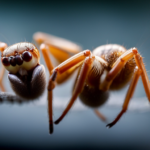Beginners Guides
House Centipede Tiny Where They Came From

Ever curious about the origins of those small centipedes in your home? Allow me to share a surprising fact about their origin.
These creepy crawlers, with their countless legs and lightning-fast movements, have been around for millions of years. They are not some recent invasion of our homes, but rather ancient creatures that have adapted and survived through the ages.
House centipedes, scientifically known as Scutigera coleoptrata, are fascinating creatures that thrive in a variety of habitats, including damp basements, bathrooms, and even attics. They play a crucial role in controlling populations of other pests, such as spiders, ants, and cockroaches.
While their appearance may be unsettling to some, house centipedes are harmless to humans and prefer to avoid direct contact whenever possible. They are skilled hunters, using their lightning-fast speed and venomous jaws to catch their prey.
In this article, we will explore the natural behavior and habitat of house centipedes, as well as their lifespan, reproduction, and why they enter our homes. We will debunk common misconceptions and myths surrounding these creatures and provide you with effective prevention and control methods.
So, let’s dive into the fascinating world of house centipedes and appreciate the benefits they bring to our ecosystems.
Key Takeaways
- House centipedes, scientifically known as Scutigera coleoptrata, have been around for millions of years.
- They thrive in damp basements, bathrooms, and attics and play a crucial role in controlling populations of spiders, ants, and cockroaches.
- House centipedes are harmless to humans and prefer to avoid direct contact. They are skilled hunters using speed and venomous jaws to catch prey.
- Prevention and control methods for house centipedes include reducing moisture, sealing cracks, and keeping the home clean and decluttered.
Habitat and Natural Behavior
Imagine yourself walking into a dimly lit basement filled with damp corners and stacks of old newspapers, where tiny house centipedes scuttle along the walls, searching for insects to feast on. These remarkable creatures, known scientifically as Scutigera coleoptrata, play a crucial role in the ecosystem as both predators and prey.
As predators, house centipedes feed on a variety of insects including spiders, silverfish, and ants, effectively controlling their population. This predator-prey relationship helps maintain the balance of the ecosystem by preventing the overpopulation of certain insect species.
Additionally, house centipedes themselves serve as prey for larger predators such as spiders and birds. Their ability to adapt to a wide range of environments, coupled with their efficient hunting skills, allows them to thrive in diverse habitats.
Now let’s delve into the fascinating aspects of their lifespan and reproduction.
Lifespan and Reproduction
To truly understand the lifespan and reproduction of these fascinating creatures, picture yourself stepping into a world where minuscule beings emerge and multiply. House centipedes have an average lifespan of about 3 years, although some individuals have been known to live up to 7 years in ideal conditions. These arthropods have a unique mating behavior. The male house centipede constructs a small web-like structure on the ground where he deposits a spermatophore. He then entices a female to approach and pick up the spermatophore, fertilizing her eggs in the process. The female will lay her eggs in a secluded location, such as cracks in walls or under floorboards. She can produce up to 150 eggs in a single batch. Now, let’s delve into the intriguing topic of why house centipedes enter homes and how to deal with them.
Why House Centipedes Enter Homes
Curious about the reasons behind those unexpected visitors? Well, brace yourself for the unsettling truth. House centipedes invade homes for a few key reasons:
-
Food: These fast-moving arthropods are attracted to the abundance of insects and spiders in our homes. They rely on this food source to survive and reproduce.
-
Moisture: House centipedes are moisture-loving creatures. They seek out damp areas like basements, bathrooms, and crawlspaces.
-
Shelter: Cracks, crevices, and clutter provide the perfect hiding spots for house centipedes. They can easily find refuge in these areas.
So, how can you get rid of these creepy crawlies? Here are a few tips:
- Reduce moisture by fixing leaks and using dehumidifiers.
- Seal cracks and gaps to prevent their entry.
- Keep your home clean and decluttered to eliminate their hiding spots.
Now that you know why house centipedes invade homes and how to get rid of them, let’s debunk some common misconceptions and myths about these fascinating creatures.
Common Misconceptions and Myths
If you’ve ever encountered one of these swift creatures, don’t be fooled by the common misconceptions and myths that surround them. House centipedes are often misunderstood and feared, but they actually serve a beneficial purpose in our homes. To help you better understand these fascinating creatures, here is a table that highlights their diet and predators:
| House Centipede Diet | House Centipede Predators |
|---|---|
| Insects | Spiders |
| Ants | Silverfish |
| Termites | Cockroaches |
| Bed bugs | Earwigs |
| Moths |
House centipedes play a crucial role in controlling the population of other household pests. Their diet consists mainly of insects like ants, termites, bed bugs, and moths. They also prey on spiders, silverfish, cockroaches, and earwigs. By keeping these pests in check, house centipedes contribute to a healthier and more balanced ecosystem inside our homes.
Understanding the house centipede’s diet and predators can help us appreciate their presence and the important role they play. Now, let’s explore prevention and control methods to ensure a harmonious coexistence with these beneficial creatures.
Prevention and Control Methods
Take a moment to consider the power of prevention and control methods when it comes to maintaining a peaceful coexistence with these helpful critters. House centipedes have natural predators that can help keep their population in check, such as spiders and certain types of birds. Encouraging these natural predators to thrive in your home can be an effective way to prevent an infestation.
Additionally, there are several DIY remedies that can be used to control house centipedes. These include sealing cracks and crevices, reducing moisture levels, and keeping your home clean and clutter-free. By implementing these prevention and control methods, you can minimize the presence of house centipedes in your home and create a more harmonious living environment.
Appreciating the benefits of house centipedes, such as their ability to control other pests, will be discussed in the next section.
Appreciating the Benefits of House Centipedes
Imagine the wonders that await you when you discover the surprising benefits of having these fascinating creatures as your tiny roommates. House centipedes may seem creepy, but they play a crucial ecological role in your home.
Here are three reasons to appreciate their presence:
-
Pest control: House centipedes are expert hunters, feasting on spiders, cockroaches, termites, and other unwanted pests that can infest your home. They’re a natural form of pest control, keeping your living space free from harmful insects.
-
Air quality: These centipedes help maintain a healthy environment by scavenging dead insects and reducing the risk of mold and bacteria growth. This contributes to better air quality, especially in damp areas like basements.
-
Ecosystem balance: House centipedes are part of a balanced ecosystem. They serve as a food source for other creatures, such as birds and larger insects. By supporting the centipede population, you’re promoting biodiversity in your home.
Embrace the benefits of house centipedes and appreciate the ecological role they play in your living space.
Frequently Asked Questions
Are house centipedes harmful to humans?
House centipedes aren’t harmful to humans. They don’t pose a threat to our health or well-being, contrary to popular belief. These creatures are actually beneficial as they feed on other pests like spiders, cockroaches, and termites. Understanding their behavior can help us coexist with them peacefully. To prevent house centipede infestations, it’s important to maintain a clean and dry environment, seal any cracks or openings in the house, and reduce clutter that may provide hiding places for them.
Do house centipedes bite or sting?
Yes, house centipedes can bite, but their bites are typically harmless to humans. They have venomous claws that they use to immobilize their prey, which consists of other insects like cockroaches, spiders, and silverfish.
House centipedes play an important role in controlling pest populations in your home. To prevent them from entering, you should eliminate their food sources, such as keeping your home clean and free of other insects, sealing cracks and crevices, and reducing moisture levels.
Can house centipedes cause any damage to the home?
House centipedes, though creepy-looking, actually provide benefits as they prey on other household pests. They don’t cause any damage to the home. In fact, they’re quite helpful in controlling populations of spiders, cockroaches, and other insects.
However, if their presence becomes bothersome, there are ways to get rid of them. Keep your home clean and clutter-free, seal off entry points, and reduce moisture levels to discourage their presence.
What attracts house centipedes to homes?
To prevent house centipedes from entering your home and repel them naturally, there are a few effective strategies. First, keep your home clean and free of clutter, as centipedes are attracted to dark and damp areas.
Seal any cracks or crevices in the walls, floors, and foundation to prevent their entry. Additionally, use natural remedies like essential oils or vinegar sprays to deter house centipedes.
These methods will help create an environment that’s less appealing to them and reduce the chances of infestation.
Are house centipedes found all over the world?
House centipedes are indeed found all over the world, making them a globally distributed species. They can be found in a variety of habitats, including homes, gardens, and natural environments. These fascinating creatures have adapted to various climates and can survive in both tropical and temperate regions. Their ability to thrive in diverse environments is one of the reasons why house centipedes have such a wide global distribution.
Conclusion
In conclusion, house centipedes may be small and creepy, but they play an important role in our homes. Just like the centipede, we all have our unique qualities that sometimes make us seem strange or unwelcome. However, by understanding and appreciating the benefits that these creatures bring, we can learn to coexist peacefully.
So, let’s embrace the house centipede and its ability to control other pests, and remember that sometimes, the things that seem odd or different can actually be valuable allies.
Hi, I’m Emma. I’m the Editor in Chief of Tiny House 43, a blog all about tiny houses. While tree houses are often associated with childhood, they can be the perfect adult retreat. They offer a cozy space to relax and unwind, surrounded by nature. And since they’re typically built on stilts or raised platforms, they offer stunning views that traditional homes simply can’t match. If you’re looking for a unique and romantic getaway, a tree house tiny house might just be the perfect option.
Beginners Guides
How Deep Should a Tiny House Closet Be

Picture yourself entering your snug tiny home, meticulously designed with every inch of space in mind. Join me on a journey into the realm of tiny house living as we delve into a crucial component: the closet.
How deep should a tiny house closet be? In this article, I’ll share my expertise and provide valuable insights on determining the perfect closet depth for efficient storage.
With creative solutions and expert tips, you’ll be able to maximize your closet space and create the organized oasis you’ve always dreamed of.
Key Takeaways
- Closet depth is crucial for organization and space-saving in a tiny house.
- The right balance between depth and space is vital for maximizing storage capacity.
- Factors such as available space and clothing storage requirements should be considered when determining closet depth.
- The ideal closet depth for efficient storage in a tiny house is generally around 24 to 30 inches.
The Importance of Closet Depth in a Tiny House
I always find the closet depth to be crucial in my tiny house. When it comes to closet organization and space saving solutions, having the right depth is essential.
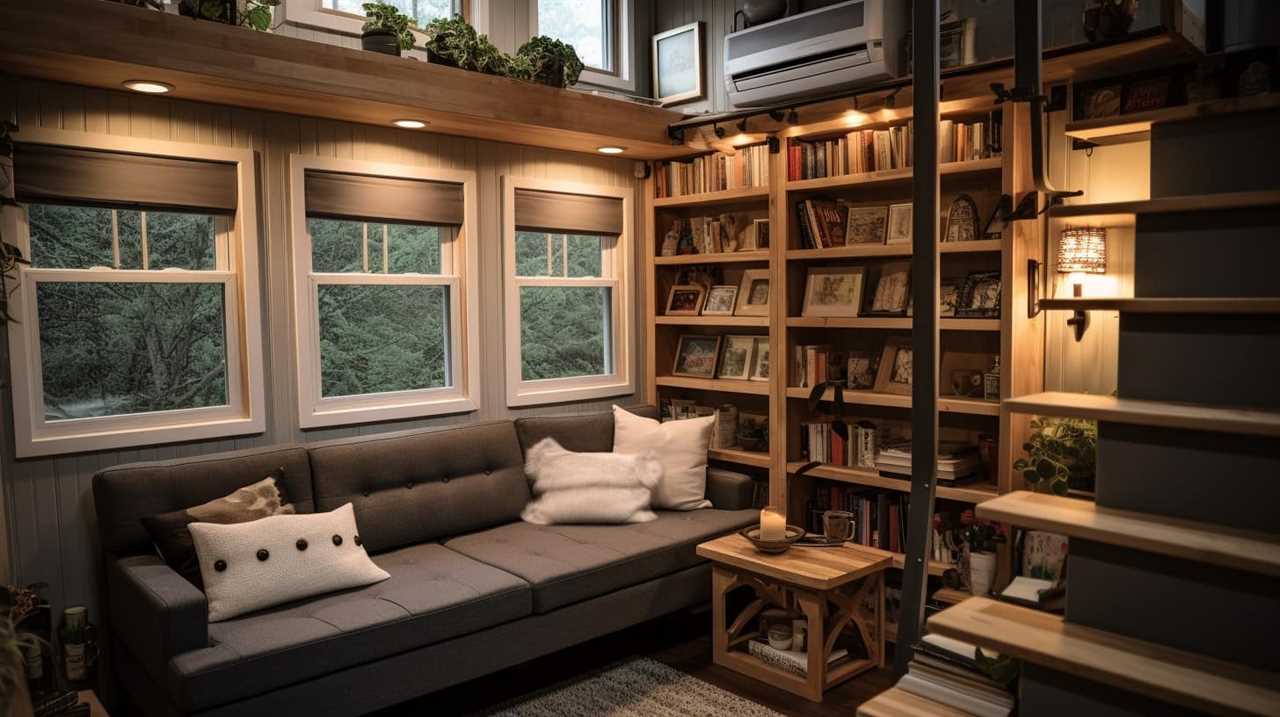
In a small living space, every inch matters, and maximizing storage capacity is key. A shallow closet depth can limit your options and make it difficult to keep your belongings organized. On the other hand, a closet that’s too deep can waste valuable space and make it challenging to access your items efficiently.
Therefore, finding the perfect balance is vital. In the next section, we’ll discuss the factors to consider when determining closet depth for tiny houses, which will help you make an informed decision for your own space.
Factors to Consider When Determining Closet Depth for Tiny Houses
When determining closet depth for tiny houses, it’s important to consider a few factors to ensure maximum functionality and efficiency. Here are three factors to consider when determining the closet depth for your tiny house:
-
Available space: Take into account the overall square footage of your tiny house and allocate the appropriate amount of space for your closet. Consider other storage needs and prioritize accordingly.

-
Clothing storage requirements: Assess your clothing collection and determine how much space you need for hanging clothes, folded items, and accessories. This will help you determine the depth needed for your closet to accommodate all your clothing storage needs.
-
Space-saving solutions: Look for innovative storage solutions that can maximize the use of your closet space. Consider using hanging organizers, shelves, and adjustable rods to make the most of the available space.
Considering these factors will help you determine the optimal closet depth for your tiny house, ensuring efficient storage solutions.
Recommended Closet Depth for Efficient Storage in Tiny Houses
To ensure efficient storage in tiny houses, a recommended closet depth is determined based on available space and storage needs. The ideal measurements for a tiny house closet can vary depending on the layout and design of the space, but generally, a depth of around 24 to 30 inches is recommended. This allows for enough space to hang clothes and store folded items without taking up too much precious square footage. Additionally, incorporating space-saving closet organization ideas can maximize the functionality of the closet. Utilizing vertical space with shelves or hanging organizers, using slim hangers, and installing hooks or racks on the closet doors can help optimize storage in a tiny house closet. By carefully considering the dimensions and implementing smart storage solutions, a tiny house closet can provide efficient storage while still maintaining a compact footprint.

| Dimensions (inches) | Hanging Space | Shelves | Drawers |
|---|---|---|---|
| Recommended Range | 24-30 | 2-3 | 1-2 |
Creative Solutions for Maximizing Closet Depth in Tiny Houses
Maximizing closet depth in tiny houses requires thinking outside the box and exploring innovative storage solutions. When space is limited, it’s important to make the most of every inch. Here are three creative solutions for maximizing storage in tiny house closets:
-
Utilize vertical space: Install hanging rods that extend from floor to ceiling to make use of the entire height of the closet. This allows for multiple levels of hanging clothes or the addition of shelving units above the rods.
-
Install adjustable shelves: Use adjustable shelves that can be moved up or down as needed. This allows for customization based on the size and type of items being stored, ensuring efficient use of the available space.
-
Use slim hangers: Opt for slim hangers that take up less space and allow for more items to be hung in the closet. This can significantly increase the overall storage capacity.

Expert Tips for Designing the Perfect Tiny House Closet
I’ve gathered some expert tips that can help you design the perfect tiny house closet. When it comes to organizing a tiny house closet, maximizing every inch of space is crucial. Here are some tips to help you make the most of your small closet:
| Tips for organizing a tiny house closet | Common mistakes to avoid when designing a tiny house closet |
|---|---|
| Utilize vertical space with shelves | Neglecting to measure the available space accurately |
| Use hanging organizers for accessories | Overcrowding the closet with unnecessary items |
| Install hooks and rods for additional storage | Ignoring the need for proper lighting in the closet |
| Sort and categorize items for easy access | Failing to consider the type and size of clothing |
| Make use of under-bed storage | Neglecting to incorporate adjustable shelving |
Frequently Asked Questions
What Are Some Alternative Storage Solutions for Tiny Houses Without a Traditional Closet?
Alternative storage solutions for tiny houses without a traditional closet include maximizing vertical space by using wall-mounted shelves, hanging organizers, and under-bed storage bins. These options allow for efficient use of limited space.
How Can I Make the Most Out of a Limited Closet Space in a Tiny House?
To maximize vertical space in a tiny house closet, I suggest using adjustable shelving and hanging organizers. Additionally, utilizing under bed storage can be a great way to store items that don’t fit in the limited closet space.
Are There Any Specific Measurements or Guidelines to Follow When Designing a Closet for a Tiny House?
When designing a closet for a tiny house, it’s important to prioritize storage space organization and maximizing vertical storage. Specific measurements and guidelines can help ensure efficient use of limited space.

What Are the Advantages of Having a Deep Closet in a Tiny House?
Having a deep closet in a tiny house offers several advantages. It allows for better organization and storage of clothing and other items, maximizing the limited closet space available.
Are There Any Specific Items or Clothing Pieces That Are Not Recommended to Be Stored in a Tiny House Closet?
Some items, like bulky winter coats or large suitcases, may not be ideal for storing in a tiny house closet. Maximizing storage in a small space requires careful consideration of what to keep.
Conclusion
In conclusion, when designing a tiny house closet, it’s crucial to consider the depth to ensure efficient storage.
According to a survey conducted among tiny house owners, it was found that the recommended closet depth for optimal organization and functionality is between 24 and 30 inches.
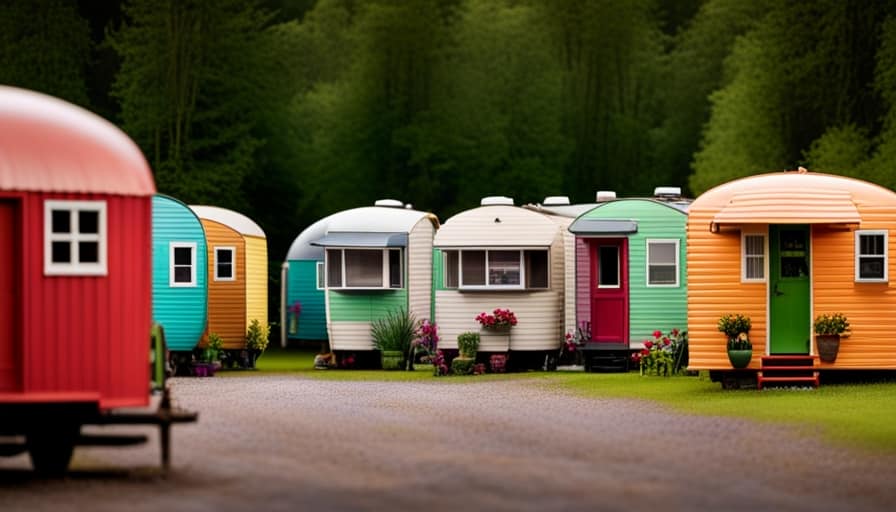
By maximizing closet depth through creative solutions such as using vertical space and utilizing adjustable shelving, tiny house dwellers can make the most out of their limited storage area.
I’m Theodore, and I love tiny houses. In fact, I’m the author of Tiny House 43, a book about tiny houses that are also tree houses. I think they’re magical places where imaginations can run wild and adventures are just waiting to happen.
While tree houses are often associated with childhood, they can be the perfect adult retreat. They offer a cozy space to relax and unwind, surrounded by nature. And since they’re typically built on stilts or raised platforms, they offer stunning views that traditional homes simply can’t match.
If you’re looking for a unique and romantic getaway, a tree house tiny house might just be the perfect option.
Beginners Guides
How Do I Get Rid of Tiny Ants in the House

I understand the frustration of finding small ants in your home. However, do not worry, as I have the solution you are looking for.
In this article, I’ll show you exactly how to get rid of those pesky pests once and for all. We’ll explore natural remedies and effective chemical treatments, as well as ways to prevent future infestations.
Say goodbye to those tiny intruders and hello to a bug-free home!
Key Takeaways
- Signs of ant activity include trails of ants, small piles of dirt or debris, and tiny holes in wooden structures.
- Identifying the type of ant is crucial for developing an effective plan to eliminate them.
- Natural remedies such as essential oils, homemade sprays, and DIY ant traps can be used to repel and eliminate tiny ants.
- Sealing entryways, cleaning the kitchen, and removing food and water sources are effective measures for preventing future infestations.
Identifying the Type of Ants in Your House
I can start by examining the characteristics and behavior of the ants present in my house to identify their type. There are several common ant species that may invade homes, such as carpenter ants, odorous house ants, and pavement ants.

To determine which type of ant is infesting your house, look for signs of ant activity, such as trails of ants, small piles of dirt or debris, or tiny holes in wooden structures. Observing their behavior and habits can also provide valuable clues. For example, carpenter ants are known for excavating wood, while odorous house ants give off a distinct odor when crushed.
Understanding the type of ants in your house is crucial in developing an effective plan to eliminate them.
Now, let’s delve into understanding the behavior and habits of tiny ants.
Understanding the Behavior and Habits of Tiny Ants
To effectively eliminate tiny ants in the house, it’s important to understand their behavior and habits. Here are some key points to consider:
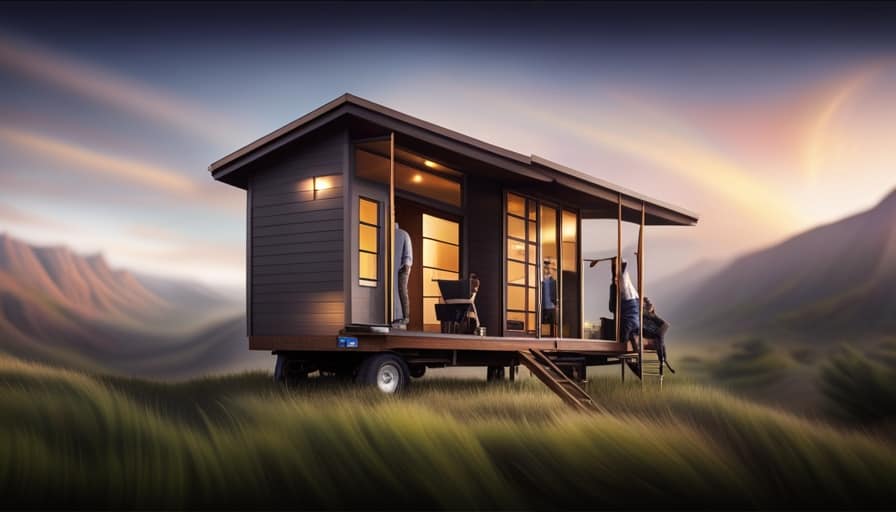
-
Ant colony communication: Tiny ants use chemical signals to communicate with each other. They leave pheromone trails to guide other ants to food sources or to communicate danger.
-
Ant foraging patterns: Tiny ants follow specific foraging patterns, usually in search of food and water. They establish trails that lead from their nests to food sources and back.
-
Nesting habits: Tiny ants often build nests in hidden areas like cracks in walls, under floors, or inside electrical outlets. Finding and eliminating these nests is crucial to eliminate the ant problem.
-
Food preferences: Tiny ants are attracted to sugary foods, crumbs, and spills. Keeping your kitchen clean and food tightly sealed can help prevent their presence.

-
Reproduction and growth: Tiny ants reproduce quickly, so it’s important to act promptly when dealing with an infestation to prevent their population from growing.
Understanding these behavior and habits of tiny ants can help you develop effective strategies to get rid of them from your house.
Natural Remedies to Eliminate Tiny Ants
One effective method for eliminating tiny ants in the house is by using natural remedies. Not only are these remedies safe for you and your family, but they’re also eco-friendly.
One option is to use essential oils as ant repellents. Ants are repelled by strong scents, so you can create a homemade spray by mixing a few drops of essential oil with water and spraying it along their entry points. Peppermint, lemon, and tea tree oil are popular choices.

Another natural remedy is to make DIY ant traps using household items. You can create a simple trap by mixing equal parts of sugar and borax and placing it in a small container near the ant trail. The ants will be attracted to the sugar, but the borax will kill them.
Remember to keep these remedies out of reach of children and pets.
Effective Chemical Treatments for Tiny Ants
Using commercially available ant baits is an incredibly effective way to eliminate tiny ants in the house. These chemical treatments offer quick results and can be a convenient solution for those dealing with a persistent ant infestation. However, it’s important to consider the long-term effects of chemical treatments.
Here are some key points to keep in mind:

-
Chemical treatments vs natural remedies: While chemical treatments provide faster results, they may contain harmful ingredients that can pose risks to humans and pets. Natural remedies, on the other hand, are generally safer but may take longer to be effective.
-
Follow instructions carefully: When using chemical ant baits, it’s crucial to carefully read and follow the instructions provided. This ensures that the treatment is applied correctly and minimizes any potential risks.
-
Monitor for effectiveness: Regularly monitor the treatment’s effectiveness to ensure that it’s eliminating the ants. If the infestation persists or worsens, it may be necessary to try a different product or consult a professional pest control service.
-
Consider professional help: If the infestation is severe or persists despite using chemical treatments, it’s advisable to seek professional help. Pest control experts have access to more potent and targeted treatments that can effectively eliminate ants.

-
Safety precautions: When using chemical treatments, it’s essential to take appropriate safety precautions. Keep the products out of reach of children and pets, and avoid applying them near food preparation areas.
Preventing Future Infestations of Tiny Ants
I can take several steps to prevent future infestations of tiny ants in my house.
One important step is to prevent ant entryways into my home. I can do this by sealing any cracks or gaps in doors, windows, and walls. It’s also important to trim any tree branches or shrubs that touch my house, as these can serve as bridges for ants to enter. Additionally, I should check for and seal any openings around utility pipes and wires.
Another crucial step is to seal food sources. I should store food in airtight containers and clean up any spills or crumbs immediately. It’s also a good idea to take out the garbage regularly and keep it in a sealed container.
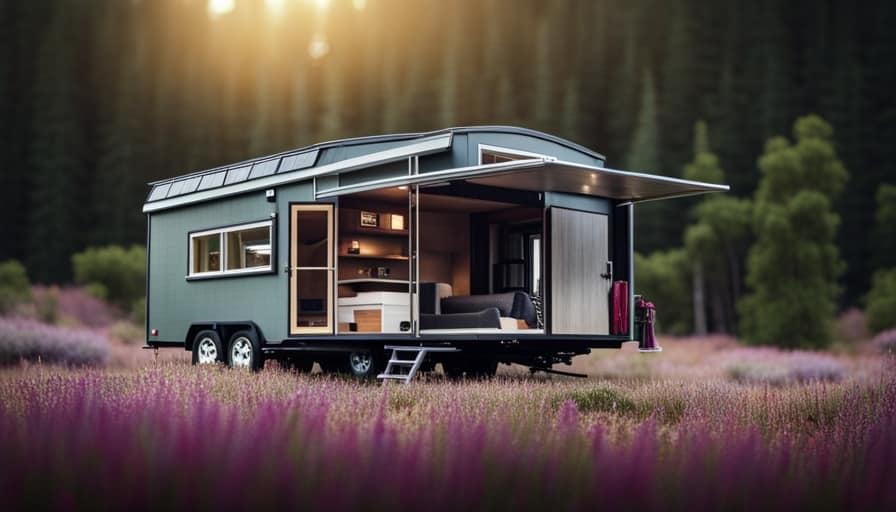
Frequently Asked Questions
Do Tiny Ants Bite or Sting?
Tiny ants can bite, but they usually don’t sting. They are more of a nuisance than a health hazard. However, they can carry diseases and prefer sugary foods.
How Long Does It Take for Natural Remedies to Eliminate Tiny Ants?
Natural remedies can take anywhere from a few days to a few weeks to effectively eliminate tiny ants. Patience is key, but rest assured, with consistency and proper application, the results will be worth it.
Can I Use Chemical Treatments for Tiny Ants if I Have Pets or Children in the House?
Yes, you can use chemical treatments for tiny ants even if you have pets or children in the house. Look for products with low toxicity and consider alternative methods for pest control as well.
Are There Any Specific Signs That Indicate a Future Infestation of Tiny Ants?
Warning signs of a future ant infestation include seeing trails of ants, finding ant nests or mounds, and noticing an increase in ant activity. Prevention methods like keeping a clean house and sealing entry points can help avoid infestations.
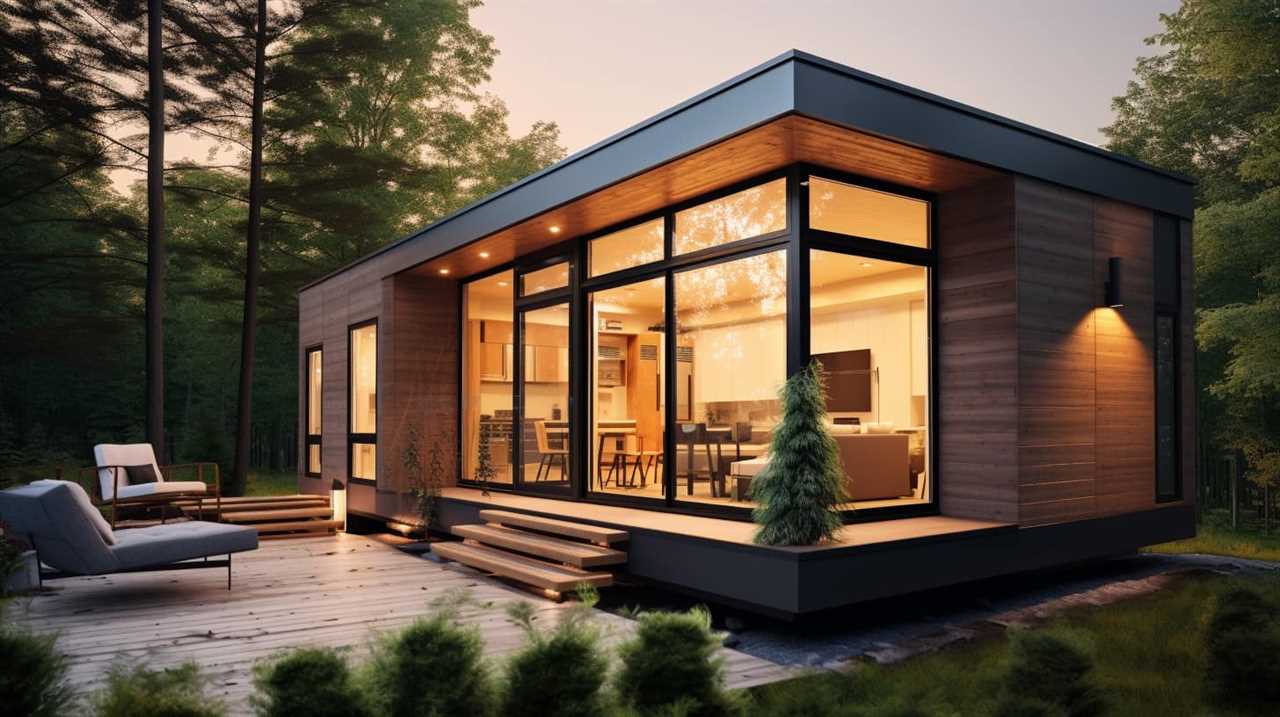
Can Tiny Ants Cause Damage to My House or Belongings?
Tiny ants, although small, can cause damage to your house and belongings. To prevent infestations, keep your home clean, seal any cracks or openings, and store food properly.
Conclusion
In conclusion, don’t let those pesky tiny ants drive you up the wall!
By identifying the type of ants in your house, understanding their behavior, and using natural remedies or effective chemical treatments, you can eliminate them.
Remember, prevention is key, so take steps to keep future infestations at bay.

Don’t let these tiny intruders rain on your parade – take action and reclaim your ant-free home!
I’m Theodore, and I love tiny houses. In fact, I’m the author of Tiny House 43, a book about tiny houses that are also tree houses. I think they’re magical places where imaginations can run wild and adventures are just waiting to happen.
While tree houses are often associated with childhood, they can be the perfect adult retreat. They offer a cozy space to relax and unwind, surrounded by nature. And since they’re typically built on stilts or raised platforms, they offer stunning views that traditional homes simply can’t match.
If you’re looking for a unique and romantic getaway, a tree house tiny house might just be the perfect option.
Beginners Guides
How Did the City of Fresno to Tiny House

As someone living in Fresno, I have always believed in the saying ‘home is where the heart is.’ Thanks to the city’s forward-thinking housing policies, even the smallest of homes can now have a place to call their own.
In this article, we’ll explore how Fresno has embraced the tiny house movement, collaborating with advocates and implementing innovative zoning regulations. Join me as we delve into the challenges faced and the remarkable progress made towards building a thriving tiny house community in Fresno.
Key Takeaways
- Fresno has implemented housing policies and initiatives aimed at increasing access to affordable housing, including energy-efficient homes and tiny house construction.
- Collaboration with tiny house advocates is crucial for effective housing solutions, as they bring valuable insights and innovative ideas to the table.
- Zoning regulations and permitting processes in Fresno are designed to engage the community and ensure that their needs and preferences are considered.
- Fresno has created innovative tiny house communities that focus on sustainability and affordability, incorporating features such as solar panels and rainwater harvesting systems.
The Shift in Housing Policies
I’m excited to talk about the changes happening in housing policies.
One of the most pressing issues in our society today is housing affordability. Many individuals and families struggle to find affordable housing options, causing financial strain and instability.
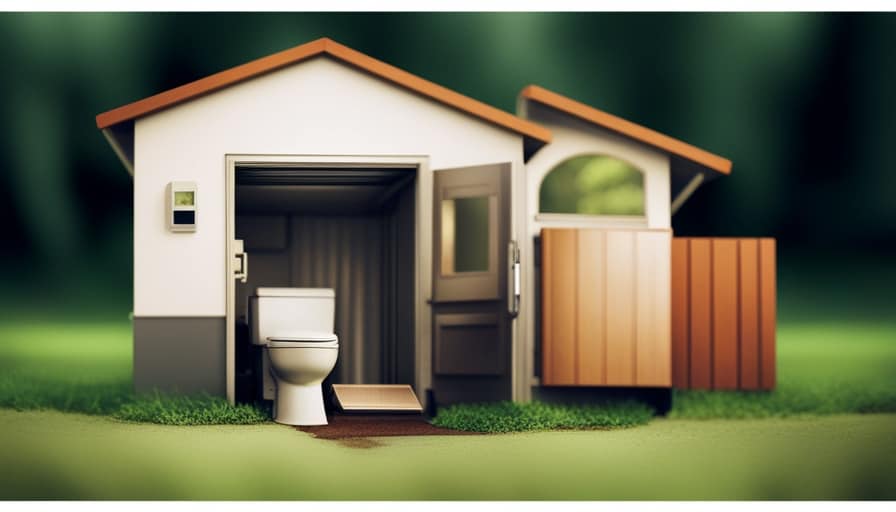
As a result, there’s been a shift in housing policies towards promoting sustainable living and increasing access to affordable housing. Governments and organizations are recognizing the importance of creating housing opportunities that are both environmentally friendly and economically viable.
This involves initiatives such as promoting energy-efficient homes, supporting the construction of tiny houses, and implementing rent control measures.
Collaborating With Tiny House Advocates
Collaborating with tiny house advocates has been crucial in implementing effective housing solutions in the city of Fresno. Through collaboration strategies and community engagement, we’ve been able to work hand in hand with advocates to address the unique challenges and opportunities that tiny houses present.
These collaborations have allowed us to tap into the knowledge and expertise of tiny house advocates, who bring valuable insights and innovative ideas to the table. We’ve engaged in open and transparent dialogues, fostering a sense of trust and understanding between all parties involved.

Zoning Regulations and Permitting Processes
Navigating the complexities of zoning regulations and permitting processes can be challenging, but it’s essential for ensuring the successful implementation of tiny house communities in the city of Fresno.
To streamline processes and make it easier for individuals and organizations to develop tiny house communities, the city of Fresno has taken steps to engage with the community and actively involve them in the decision-making process.
This includes hosting public meetings, soliciting feedback, and conducting thorough assessments of potential sites for tiny house communities. By involving the community in these processes, the city of Fresno can address any concerns or issues that may arise, while also ensuring that the needs and preferences of the community are taken into consideration.
This collaborative approach not only helps to build trust and support, but also allows for a more efficient and effective implementation of tiny house communities in the city.
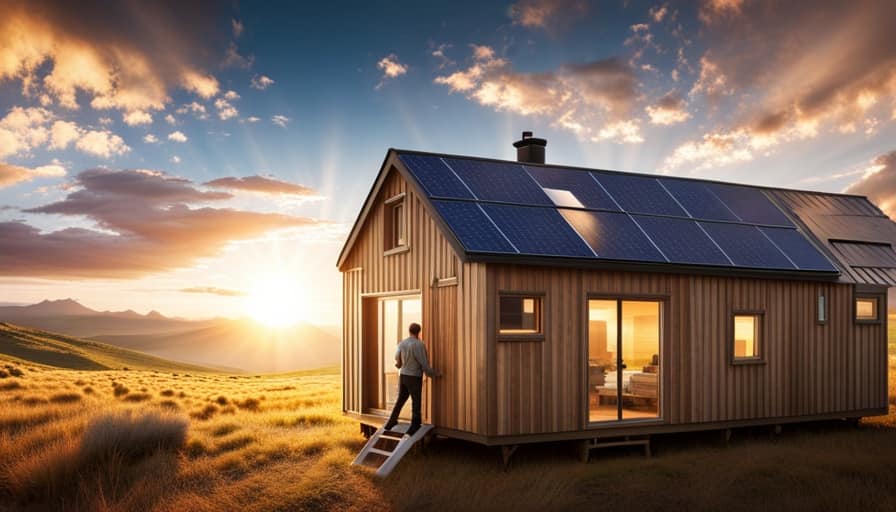
Innovative Tiny House Communities in Fresno
One innovative approach to creating tiny house communities in Fresno is through the use of sustainable materials and renewable energy sources. These communities are designed with a focus on sustainability, incorporating features such as solar panels, rainwater harvesting systems, and energy-efficient appliances. By utilizing these sustainable practices, residents can reduce their carbon footprint and live in homes that are environmentally friendly.
Additionally, these communities aim to provide affordable living options for individuals who may not be able to afford traditional housing. Through the use of smaller, more efficient spaces, the cost of construction and maintenance is reduced, making it more accessible for those on a limited budget.
These innovative tiny house communities in Fresno are paving the way for sustainable housing and promoting affordable living for all.
Transitioning into the next section, let’s explore the challenges faced in building a tiny house movement.
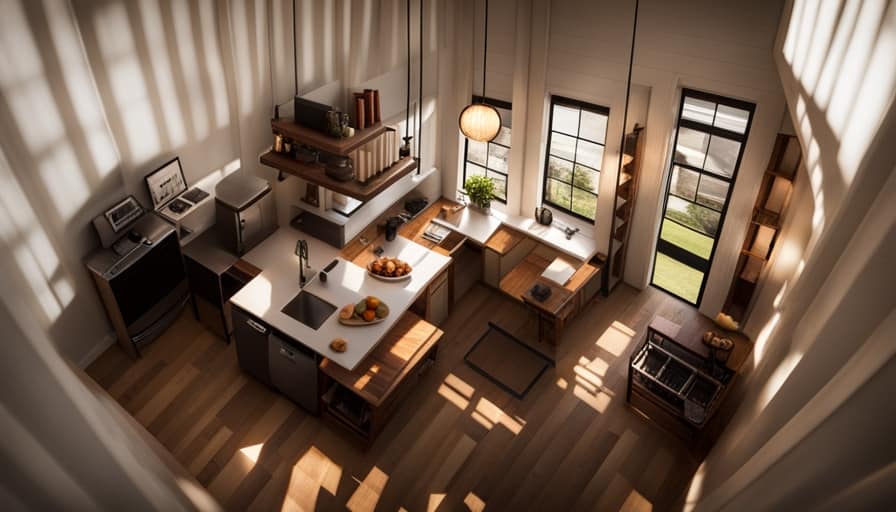
Overcoming Challenges and Building a Tiny House Movement
Confronting obstacles and working together, we can create a thriving tiny house movement in Fresno.
To overcome challenges and build a sustainable and affordable housing solution, we must first address zoning regulations. Currently, many cities have restrictions that make it difficult to build tiny houses on a permanent foundation. By advocating for changes in zoning laws, we can create more opportunities for tiny house communities.
Additionally, we need to address financing options for individuals interested in building tiny houses. Traditional lending institutions may not provide loans for these unconventional homes, so alternative financing options must be explored. Collaborating with local government, community organizations, and financial institutions can help us develop innovative solutions to overcome these challenges.
Frequently Asked Questions
How Long Does It Typically Take to Build a Tiny House?
Typically, it takes around 2-4 months to build a tiny house. The building timeline can vary based on factors like design complexity, availability of materials, and contractor availability. Cost considerations include materials, labor, and permits.
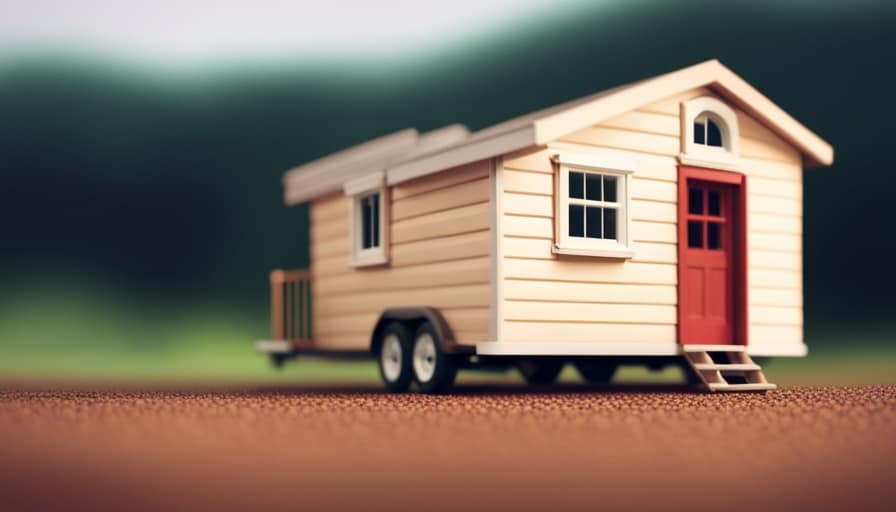
Are There Any Specific Requirements for the Size or Design of a Tiny House in Fresno?
In Fresno, specific requirements exist for the size and design of tiny houses. The city has set guidelines to ensure safety and conformity. Meeting these requirements is crucial to obtaining necessary permits and building a legally compliant tiny house.
Can I Legally Live in a Tiny House on Wheels in Fresno?
Yes, you can legally live in a tiny house on wheels in Fresno. While specific regulations may vary, other cities have implemented tiny house regulations with benefits such as affordability, sustainability, and minimal environmental impact.
How Can I Find Resources and Support for Building My Own Tiny House in Fresno?
Finding local workshops and connecting with tiny house builders in Fresno is crucial for building my own tiny house. Through thorough research and analytical thinking, I can discover resources and support to ensure a successful project.
Are There Any Financial Incentives or Grants Available for Individuals Interested in Building a Tiny House in Fresno?
There are financial assistance programs and grants available for individuals interested in building a tiny house in Fresno. It’s important to familiarize yourself with the building regulations and requirements to ensure compliance.
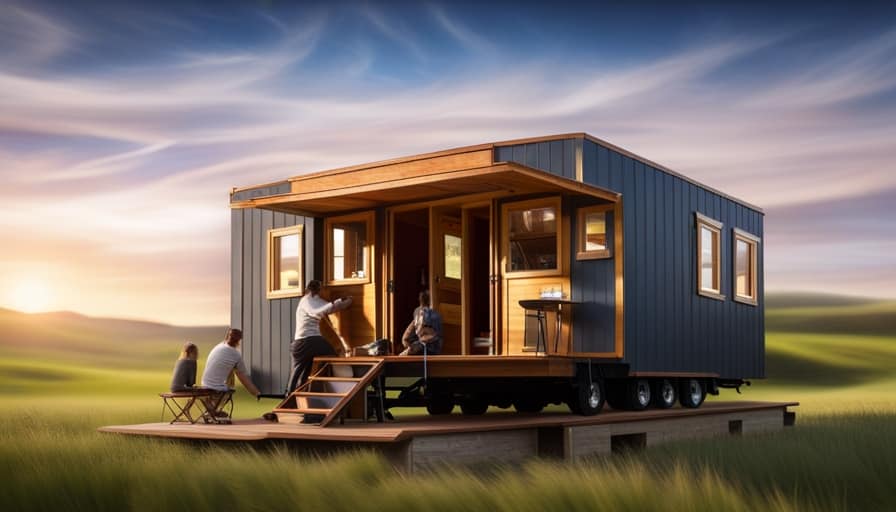
Conclusion
In conclusion, the city of Fresno has successfully embraced the tiny house movement through a shift in housing policies, collaboration with advocates, and innovative communities.
The zoning regulations and permitting processes have been streamlined to accommodate tiny house living. Despite challenges, the city has built a strong foundation for the tiny house movement to thrive.
As the saying goes, "The journey of a thousand miles begins with a single step," and Fresno has taken that step towards a more sustainable and affordable housing solution.
I’m Theodore, and I love tiny houses. In fact, I’m the author of Tiny House 43, a book about tiny houses that are also tree houses. I think they’re magical places where imaginations can run wild and adventures are just waiting to happen.
While tree houses are often associated with childhood, they can be the perfect adult retreat. They offer a cozy space to relax and unwind, surrounded by nature. And since they’re typically built on stilts or raised platforms, they offer stunning views that traditional homes simply can’t match.
If you’re looking for a unique and romantic getaway, a tree house tiny house might just be the perfect option.
-

 Beginners Guides2 weeks ago
Beginners Guides2 weeks agoHow To Buy A Tesla Tiny House
-

 Energy Efficiency2 months ago
Energy Efficiency2 months agoBest Tiny Homes For Cold Climates
-

 Beginners Guides1 week ago
Beginners Guides1 week agoTiny House Nation Where Are They Now Stephanie
-

 Tiny House Resources (e.g., legalities, cost, insurance, FAQs)2 months ago
Tiny House Resources (e.g., legalities, cost, insurance, FAQs)2 months agoDo Tiny Homes Need Planning Permission?
-

 Beginners Guides3 weeks ago
Beginners Guides3 weeks agoFrom The Show Tiny House Nation How Many Keep Their Tiny House?
-

 Beginners Guides2 months ago
Beginners Guides2 months agoUsing a Climbing Net For Treehouse Construction
-

 Beginners Guides2 months ago
Beginners Guides2 months agoHow to Build a Treehouse Without Drilling Into the Tree
-

 Beginners Guides3 weeks ago
Beginners Guides3 weeks agoTiny House Nation Who Pays For The Houses




